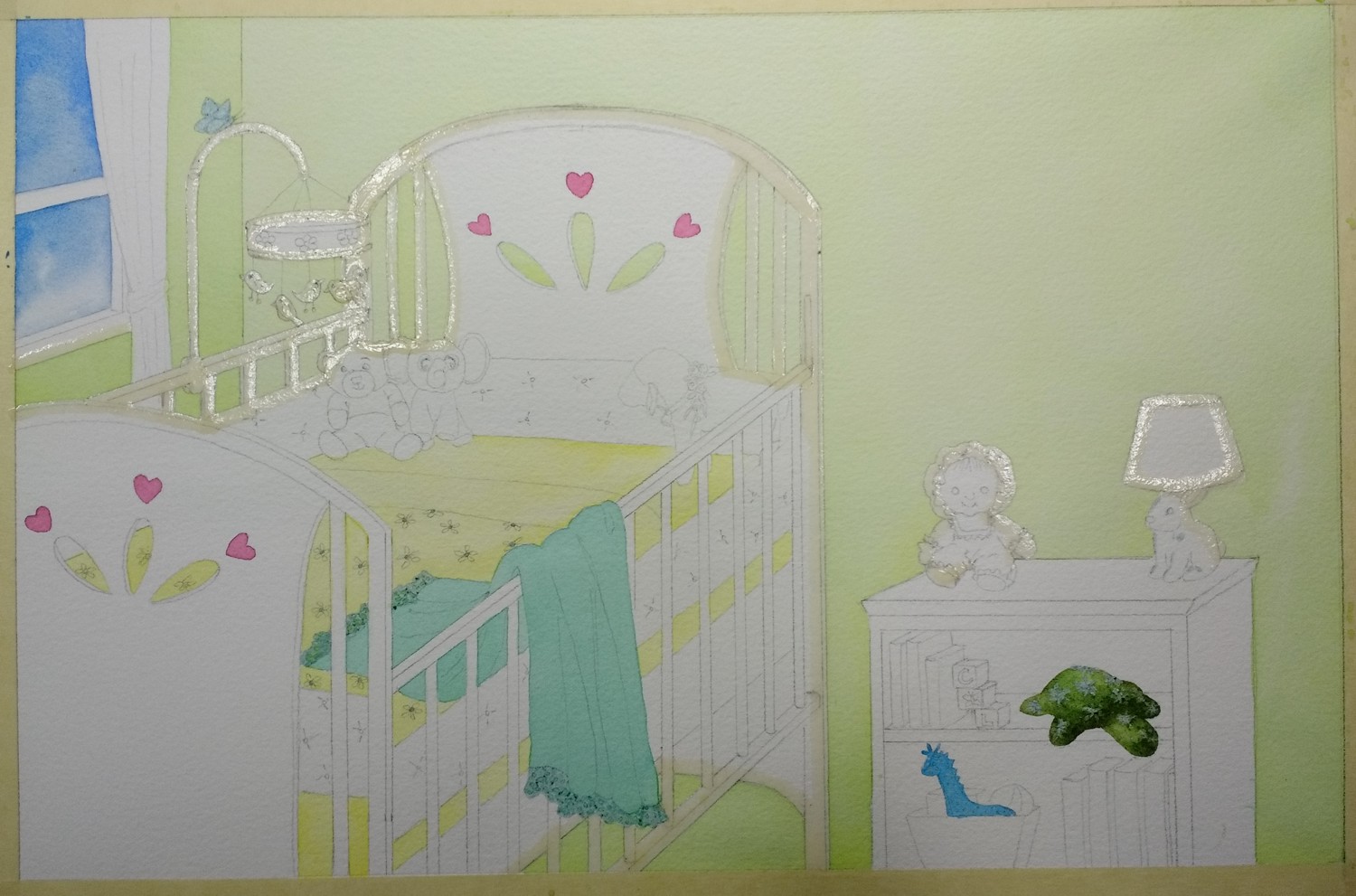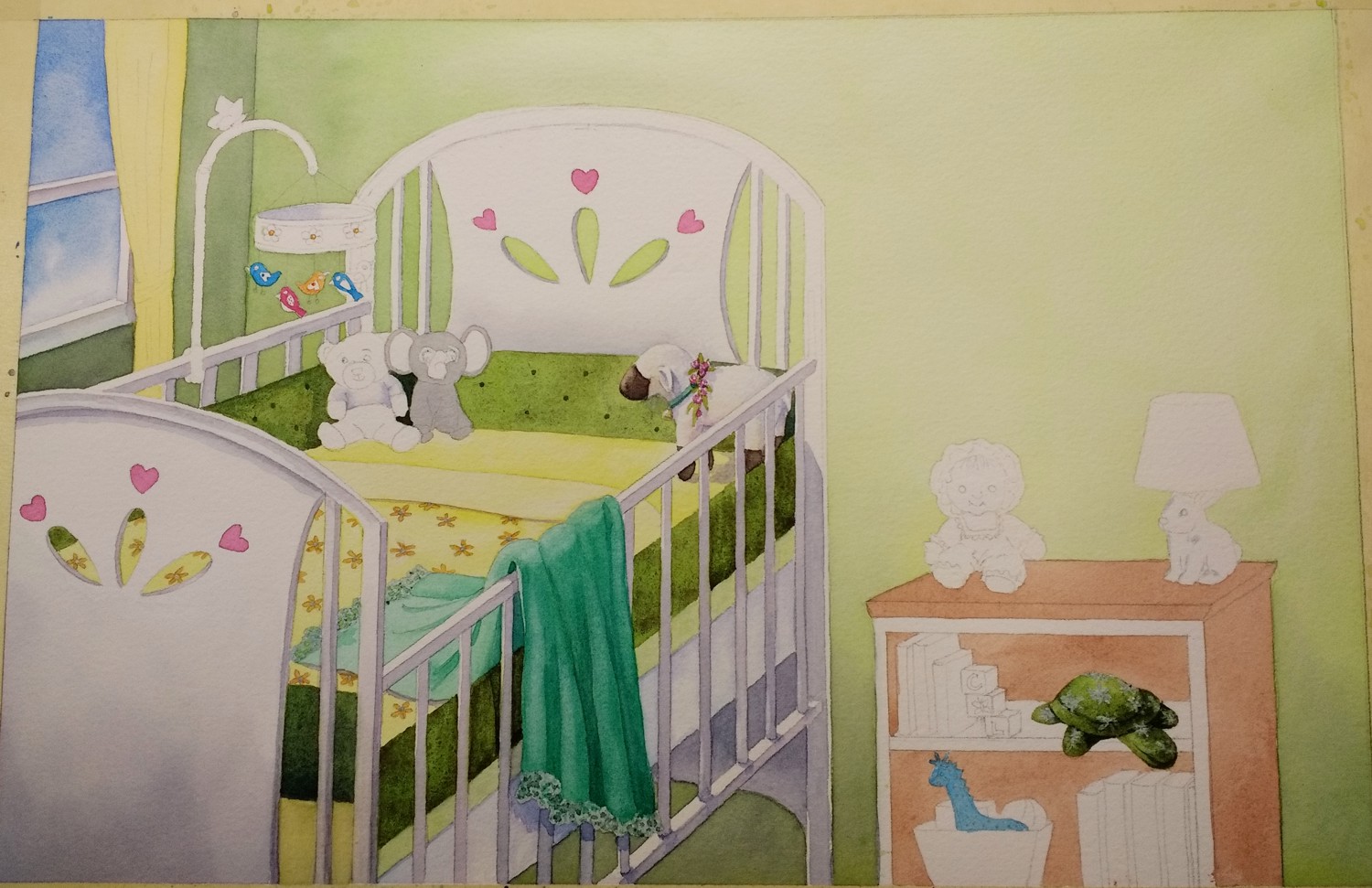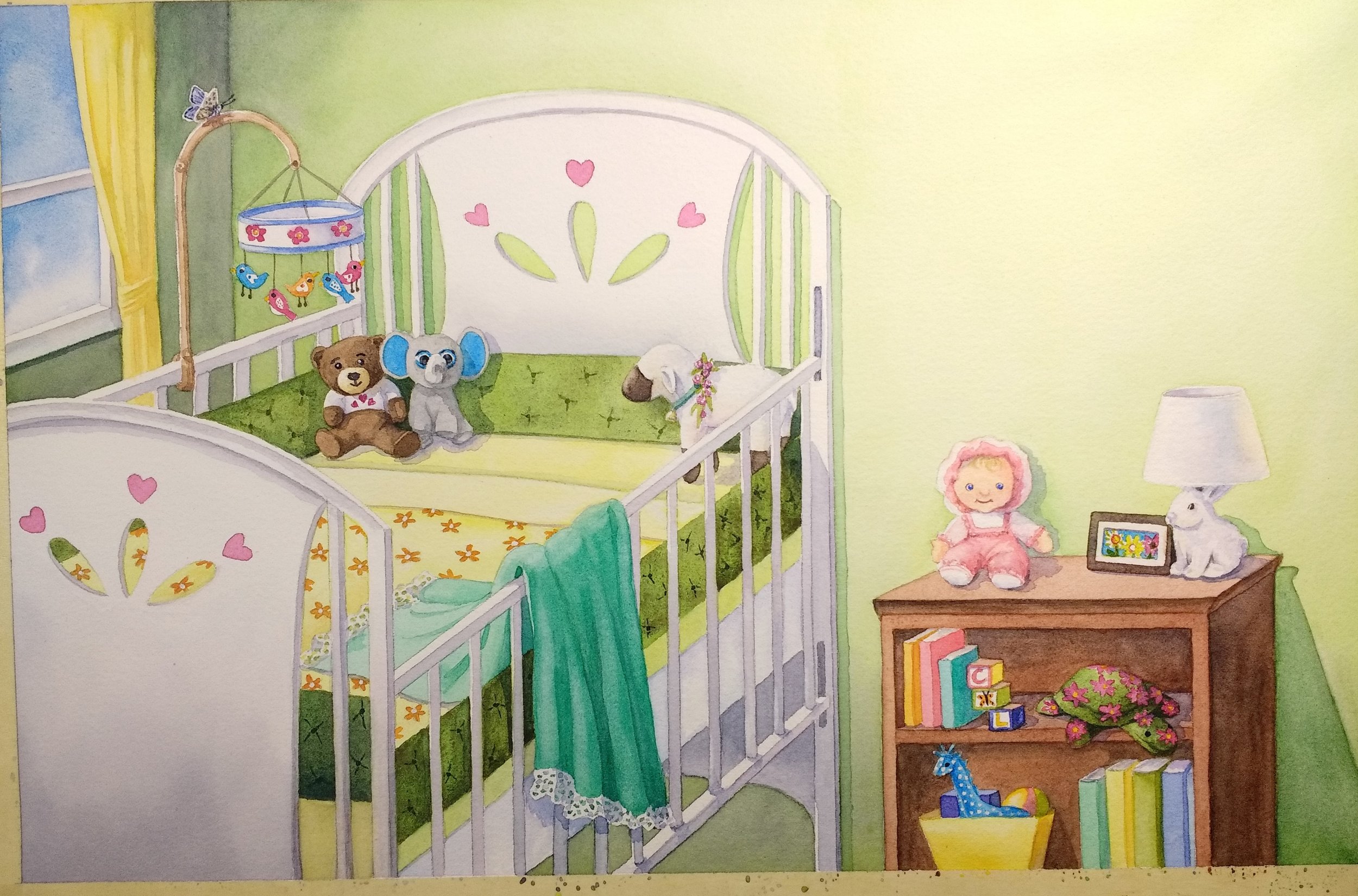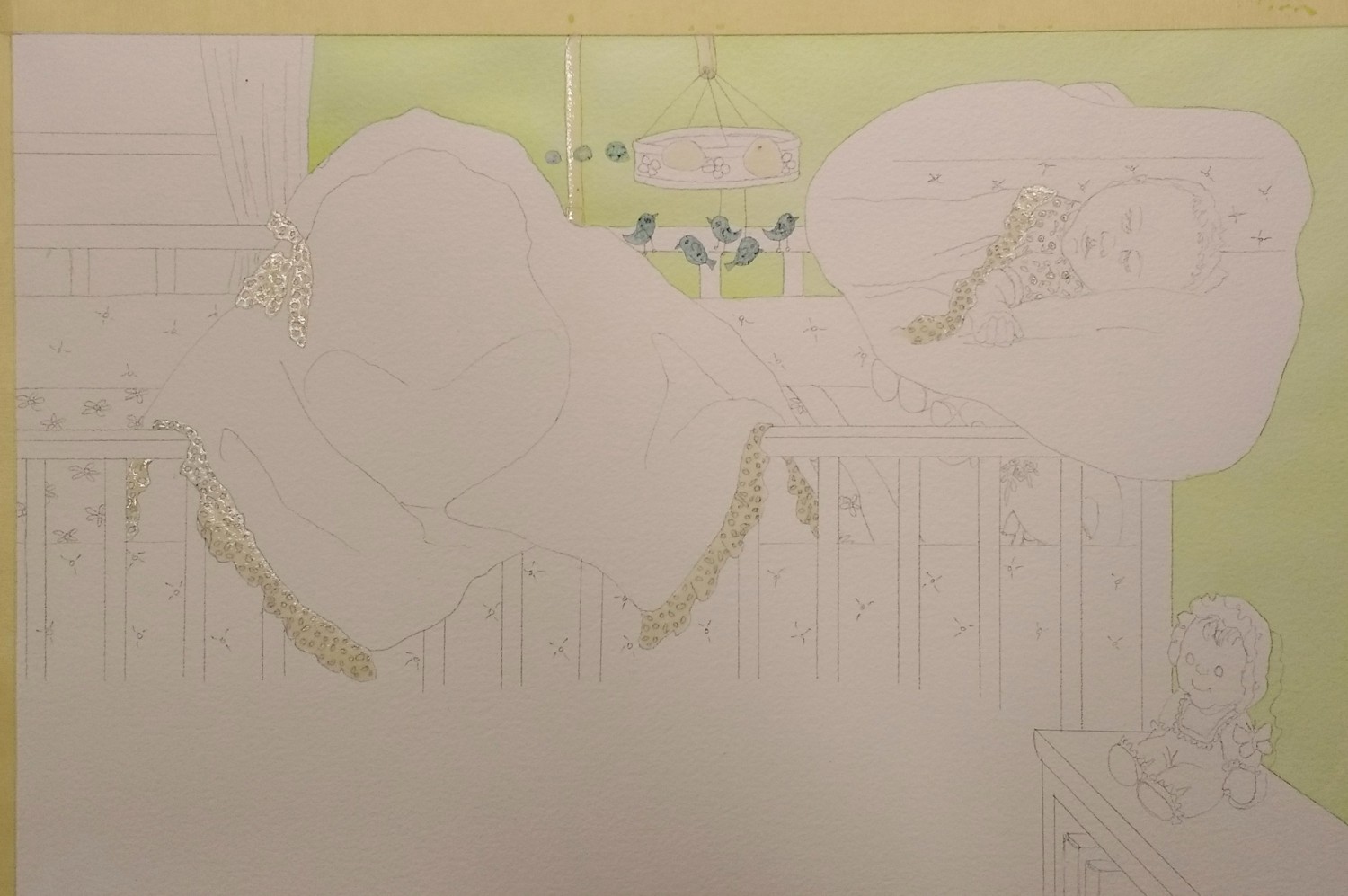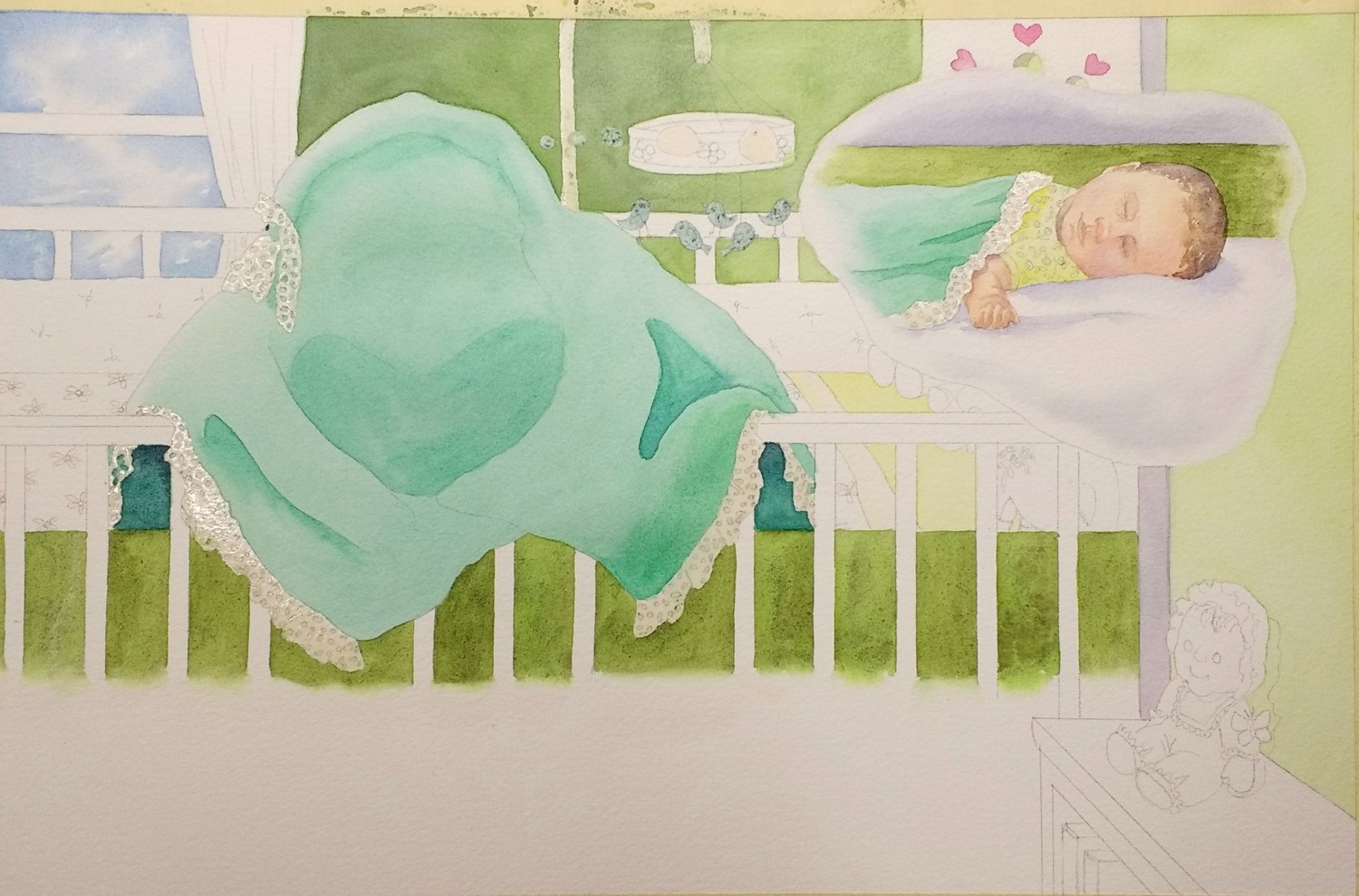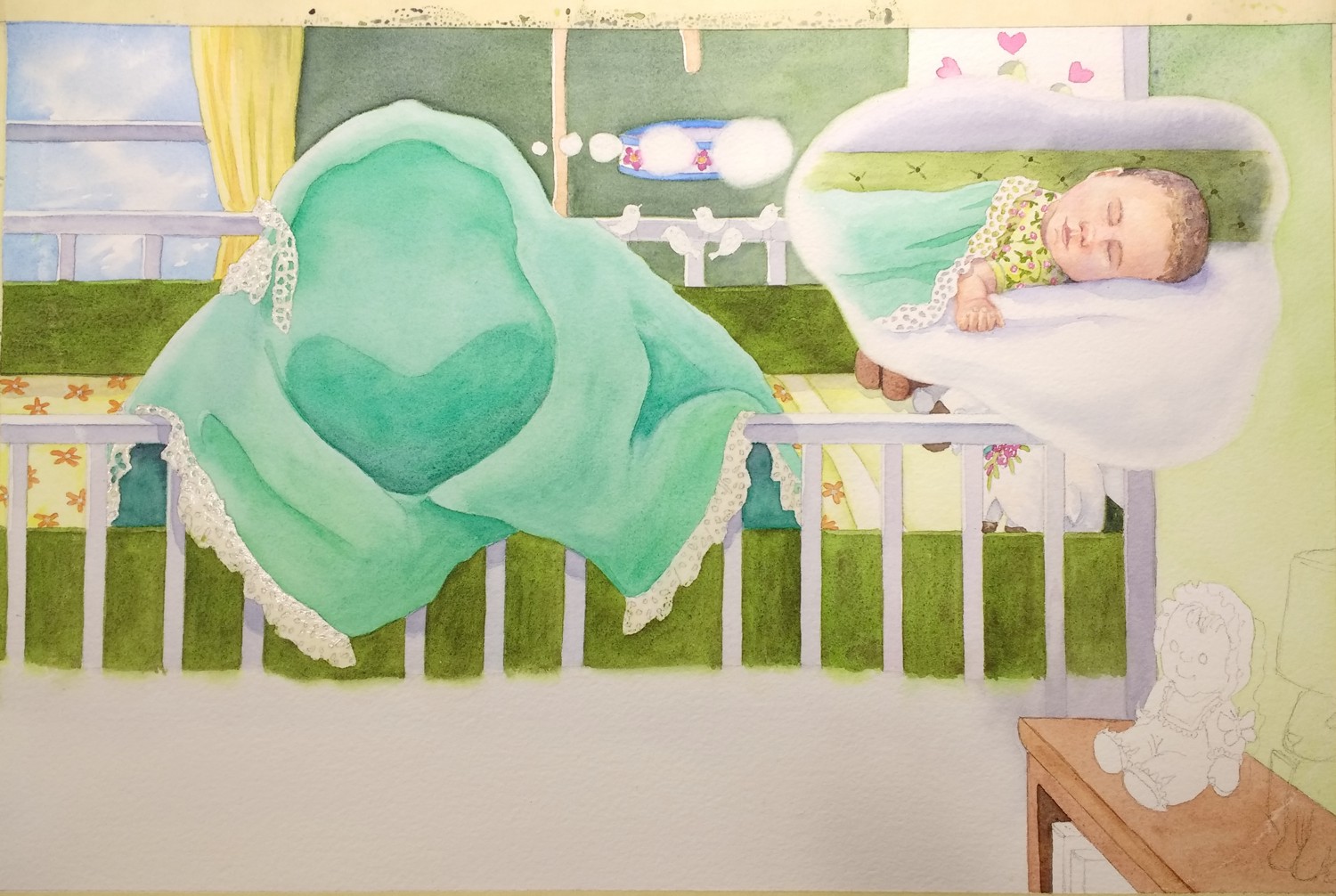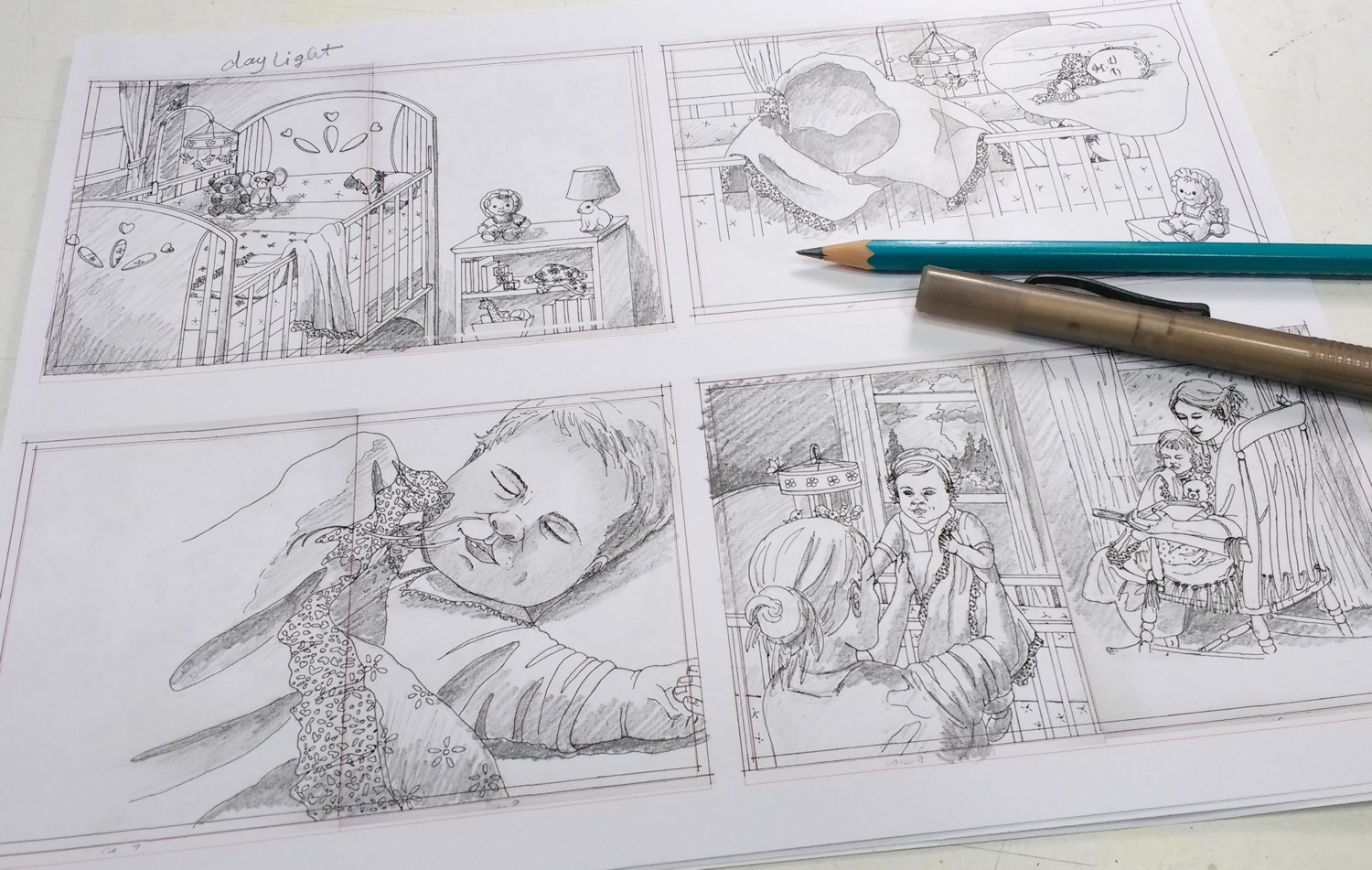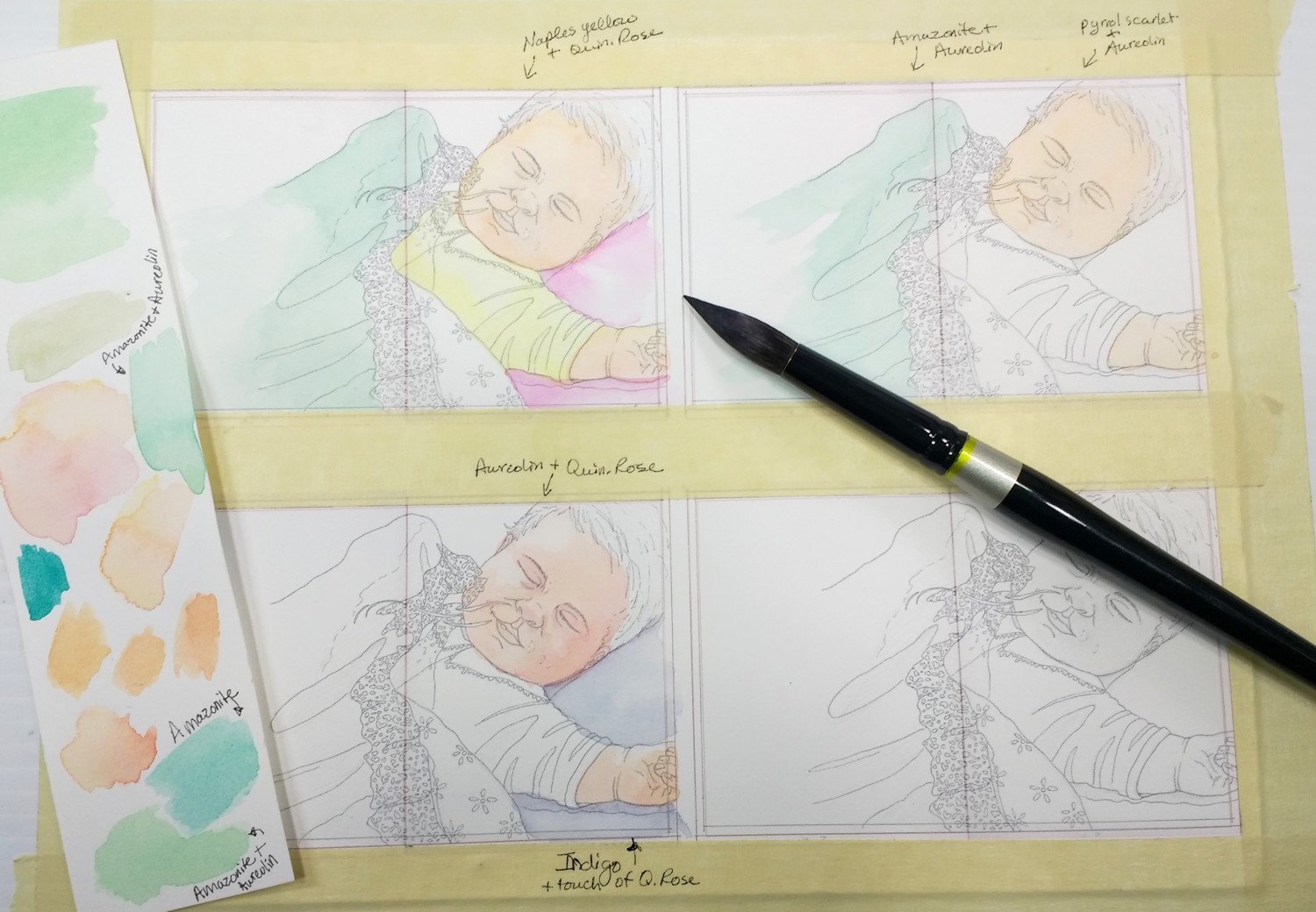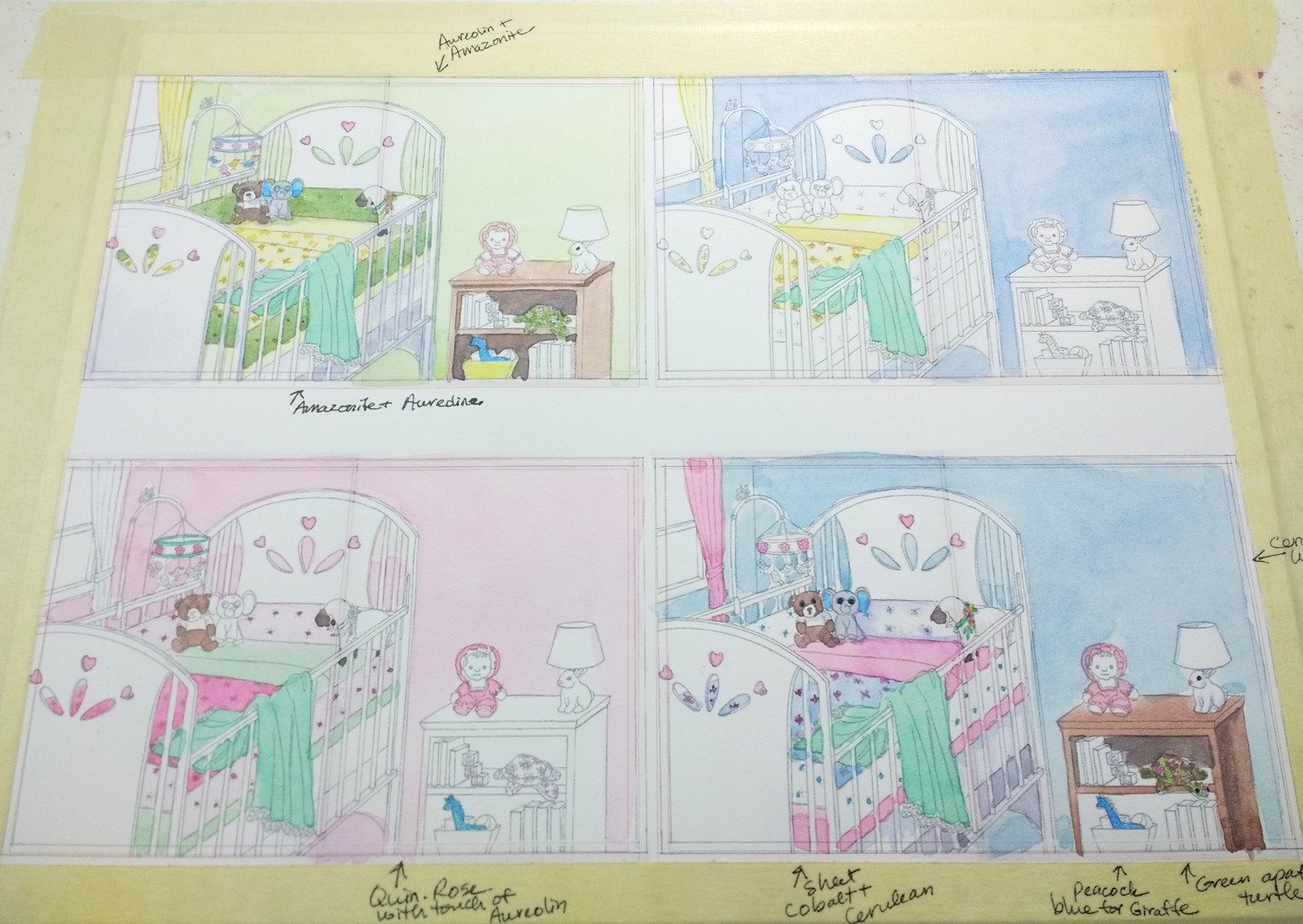Blankie Meets Baby
I am behind on my blog but I have a lot more of the illustrations for the children’s book, “For I Am Yours”, completed. For those that are new to my blog, I am creating 17 watercolor illustrations for a children’s book written by author, Pauline Hawkins. Some of these 17 illustrations are 9”x7” and some are the double spread and therefore, 9”x14”. The story is told from the blanket’s point of view and, as the baby grows, the blanket is needed less and less. The blanket is a metaphor for a mother’s love.
One of my favorite images so far is early on in the story when Blankie meets Baby for the first time and feels her breath on it’s ruffles. I enjoyed the close up view of the baby and tried to create a peaceful color scheme.
Skin Tones In A Watercolor
I started this watercolor with thin washes of color on the blanket, the babies skin, and the clothing. Then I started building the depth with glazes of the same colors. I use a warm red (Pyrrol Scarlet) with New Gamboge Yellow for the base skin tone on the baby and then start to glaze on more of the same colors for depth. I also use other mixes to cool the skin tone down in places or give it shadow. Some of the mixes I like are: Quinacridone Rose by itself or with a yellow like New Gamboge or Aureolin Yellow, Permanent Alizeran Crimson & Ultramarine blue for the shadows and Pyrrol Scarlet with a tough of Burnt Sienna for warm, darker areas. I also leave some glazes with hard edges and use water to soften other edges after applying them. If there were more dramatic light on the baby, my glazes would be darker and might have harder edges in places.
Applying Masking Tape To Preserve Whites In a Watercolor
Before starting the painting, I used some masking tape on the shapes that would become the baby’s breath. The tape was applied over my pencil line and then cut out. You can see more of this process in my blog post at this link: Masking a Watercolor With Masking Tape. You can see the masking tape in this image because of the darker paint. In this image I have continued to work around the painting. I applied the first layer of color to the hair and used some water toward the upper right corner to soften the hair into that corner. I also used some Indigo while the paint of the hair was still wet to darken the corner. I have started to add shadows. These additions allow me to see how all of the values and colors are working without over committing too soon. So, I take my time and keep building until I feel I have an area completed.
Painting An Illustration Without A Photographic Resource
I was not working from a photo for this image, as is the case for most of the illustrations in this children’s book. Therefore, I am using my knowledge of other paintings to create the light and form of the objects. I purposely kept the light on the babies face a little softer and used harder shadows on the blanket and the fabrics to keep the look of the baby soft and sweet. Whenever, I work on a face, I tend to make adjustments and changes as I go. With watercolor this can be a little tricky. I was happy with this painting, but in one of the later figures, I ended up having to start again because I could not get the facial features to work. To finish this illustration, I removed the masking tape from the shapes representing the babies breath. I then used a small flat brush with a little water to soften some of the edges of the white shapes, so that they would not stand out as much and look more “atmospheric”.
If you would like to see more of these illustrations, please follow along and I will continue to blog about this journey.

